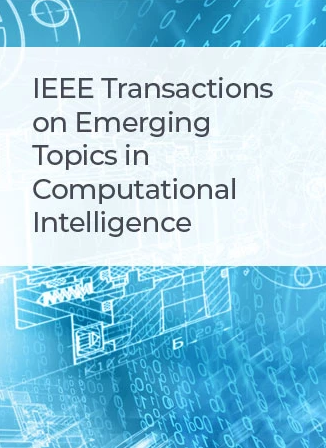Adversarial Examples Detection With Bayesian Neural Network
IF 5.3
3区 计算机科学
Q1 COMPUTER SCIENCE, ARTIFICIAL INTELLIGENCE
IEEE Transactions on Emerging Topics in Computational Intelligence
Pub Date : 2024-03-18
DOI:10.1109/TETCI.2024.3372383
引用次数: 0
Abstract
In this paper, we propose a new framework to detect adversarial examples motivated by the observations that random components can improve the smoothness of predictors and make it easier to simulate the output distribution of a deep neural network. With these observations, we propose a novel Bayesian adversarial example detector, short for利用贝叶斯神经网络检测逆向实例
在本文中,我们提出了一种检测对抗示例的新框架,其动机是观察到随机成分可以提高预测器的平滑度,并使深度神经网络的输出分布更容易模拟。根据这些观察结果,我们提出了一种新型贝叶斯对抗示例检测器(简称 BATer),以提高对抗示例检测的性能。具体来说,我们研究了隐藏层输出在自然示例和对抗性示例之间的分布差异,并提出利用贝叶斯神经网络的随机性模拟隐藏层输出分布,并利用分布的分散性来检测对抗性示例。贝叶斯神经网络的优势在于输出具有随机性,而没有随机成分的深度神经网络则不具备这种特性。在几个针对流行攻击的基准数据集上的实证结果表明,所提出的 BATer 在对抗性示例检测方面优于最先进的检测器。
本文章由计算机程序翻译,如有差异,请以英文原文为准。
求助全文
约1分钟内获得全文
求助全文
来源期刊

IEEE Transactions on Emerging Topics in Computational Intelligence
Mathematics-Control and Optimization
CiteScore
10.30
自引率
7.50%
发文量
147
期刊介绍:
The IEEE Transactions on Emerging Topics in Computational Intelligence (TETCI) publishes original articles on emerging aspects of computational intelligence, including theory, applications, and surveys.
TETCI is an electronics only publication. TETCI publishes six issues per year.
Authors are encouraged to submit manuscripts in any emerging topic in computational intelligence, especially nature-inspired computing topics not covered by other IEEE Computational Intelligence Society journals. A few such illustrative examples are glial cell networks, computational neuroscience, Brain Computer Interface, ambient intelligence, non-fuzzy computing with words, artificial life, cultural learning, artificial endocrine networks, social reasoning, artificial hormone networks, computational intelligence for the IoT and Smart-X technologies.
 求助内容:
求助内容: 应助结果提醒方式:
应助结果提醒方式:


